- Home
- Treatments
- Orthodontics
Orthodontics
-
Introduction
It aims to correct teeth and jaw malpositioning. Crowded teeth or not fitting well are more difficult to clean and are more likely to have dental caries or periodontal disease. It also causes extra stress on the muscles of mastication causing temporo-mandibular disorders with headache and arthritis of the temporomandibular joint.
So orthodontic treatment contributes to a healthy mouth, aesthetically beautiful teeth that are more likely to remain like that for more time.What factors contribute to the development of malocclusion?
 Heredity;
Heredity;  Trauma;
Trauma;  Habits Certain habits are considered normal, as the normal action of lips and chewing, as they play an important role in the growth of the jaws. The unusual habits that interfere with the regular pattern of facial growth are responsible for malocclusion. This leads to defective bone growth, poorly positioned teeth, difficulty in breathing and finger sucking. This is practiced by many children and this habit is usually abandoned at about 3 or 4 years without sequelae. Continuing the habit of sucking the thumb or fingers, beyond this age may be a direct cause of severe malocclusion.
Habits Certain habits are considered normal, as the normal action of lips and chewing, as they play an important role in the growth of the jaws. The unusual habits that interfere with the regular pattern of facial growth are responsible for malocclusion. This leads to defective bone growth, poorly positioned teeth, difficulty in breathing and finger sucking. This is practiced by many children and this habit is usually abandoned at about 3 or 4 years without sequelae. Continuing the habit of sucking the thumb or fingers, beyond this age may be a direct cause of severe malocclusion.  Systemic diseases;
Systemic diseases;When to start?
It is recommended that all children receive an orthodontic evaluation around 6 / 7 years. This is the ideal age to assess the need for orthodontic treatment and type of treatment, because the bones are still growing.
Orthodontic treatment in young children is called interceptive treatment. At this age, tooth development and growth of the jaws is not yet complete so it is easier to correct some problems. A common problem is small space to accommodate teeth. Interceptive treatment takes advantage of the fact that the jaw is still growing and we use a palate expander for expanding the upper arch. As the size of the arch becomes appropriate is more likely that the erupted permanent teeth goes into correct position. However, after the complete eruption of permanent teeth the patient should undergo further evaluation by the orthodontist.
It is noted that children who receive interceptive treatment may still need fixed orthodontic treatment (braces) later, after eruption of the permanent teeth, however this treatment will be shorter, simplified and with less drastic measures (eg, may not require dental extractions or orthognathic surgery).When it is indicated?
The orthodontist will assess whether the patient needs orthodontic treatment through clinical history, clinical exam, plaster models of teeth, radiographs and photographs.
Orthodontic treatment can be done on adults?
The number of adults using fixed appliances has increased in recent times for various reasons. Some seek treatment to avoid that the problems of the jaws and temporomandibular joint get worse, others for aesthetic reasons, to feel better about their appearance. It should be noted that even the aesthetic problems can cause damage over time. Teeth are not correctly aligned are subject to premature wear, caries and periodontal disease, with consequent loss of teeth.
How long?
The duration of treatment depends on the complexity of the orthodontic problem, growth, tissue response to treatment and patient cooperation, and is usually between 24 and 36 months.
What precautions to take?
It is necessary to devote more time to brushing so that all areas around the braces are properly clean. The patient should use an interdental brush and an antiseptic mouthwash. The aim is to remove plaque that is around the teeth and gums. Bacteria of the plaque can cause gingivitis, decalcification and permanent enamel caries. The device does not cause these changes but makes it more difficult to remove plaque.
What is orthognathic surgery?
This type of surgery aims to align the jaws. Most frequent indications are the correction of facial deformities, dental appearance, chewing problems due to malocclusion or speech abnormalities. The most frequent problems corrected by orthognathic surgery are the developmental disabilities of the upper or lower jaw, increased or decreased exposure of the anterior-superior or facial asymmetry. It also has particular importance in cases of congenital craniofacial syndromes such as cleft palate. The vast majority of orthognathic cases require a period of treatment with fixed appliance in preparation for surgery. This allows for optimal correction of occlusion and the appearance of the face and teeth. After surgery follows a variable period to complete the tooth positioning.
-
Major Problems
Increased Overjet
When the upper teeth are too out of the lower;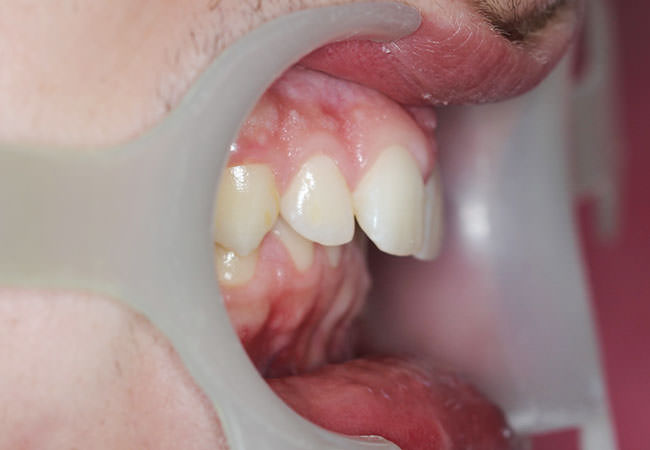
Crossbite
When the upper teeth are inside the lower;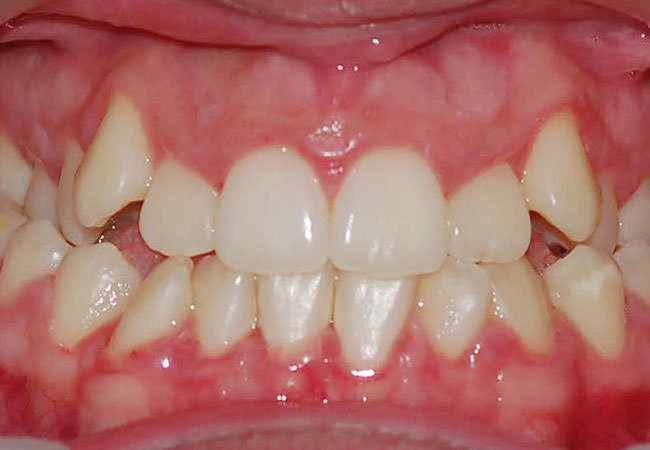
Open bite
When posterior teeth are in contact and there is a space between the upper and lower anterior teeth.
Deep Bite
When your upper teeth cover too much the lower teeth.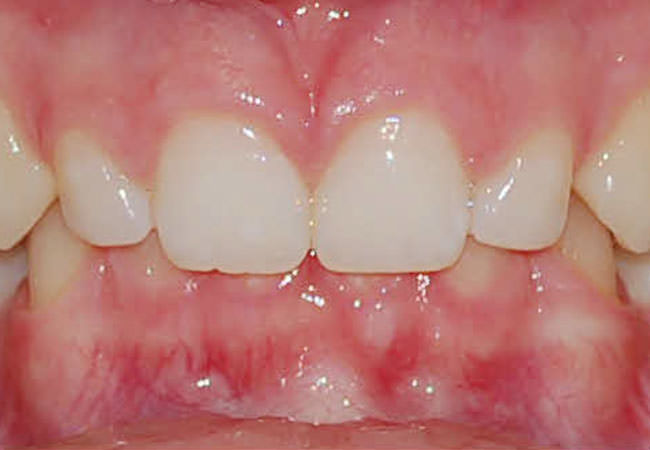
Misalignment of the midline
When the line passing through the anterior-superior teeth is not aligned with the line between the lower anterior teeth.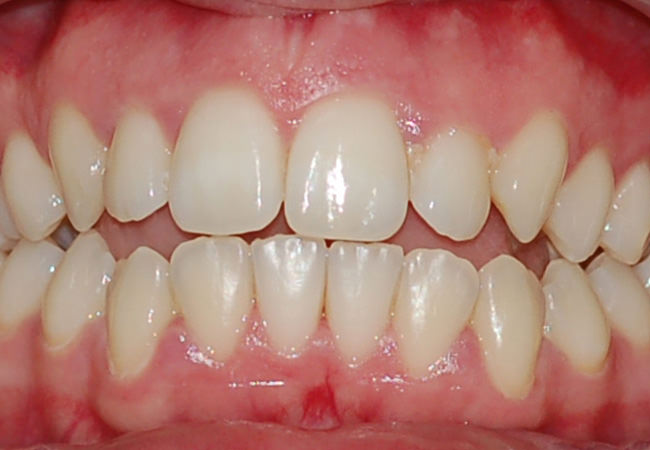
Diastema
When there's spaces between teeth.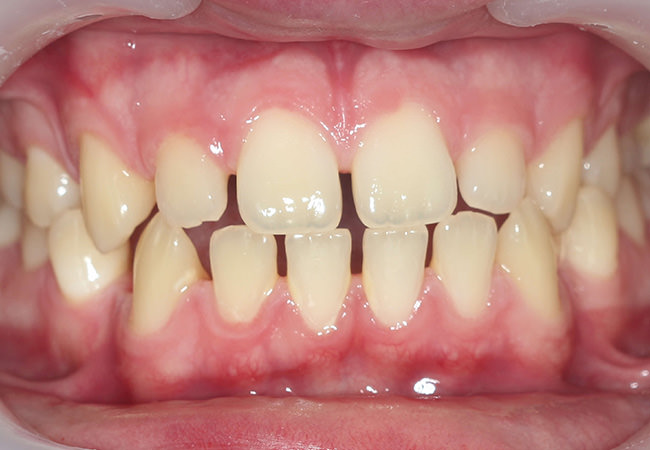
Crowding (lack of space)
When there is no space in the dental arch to accommodate the teeth.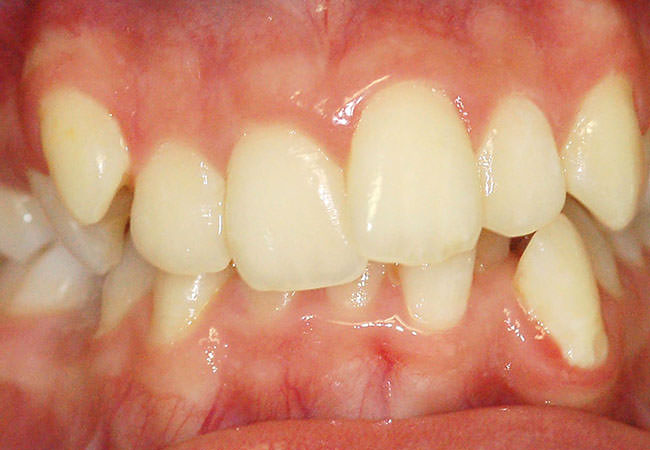

Impacted teeth
Teeth that do not erupt. This happens sometimes with the canine tooth. It's necessary surgical exposure of the tooth. Then the tooth is pulled to the arcade with the braces.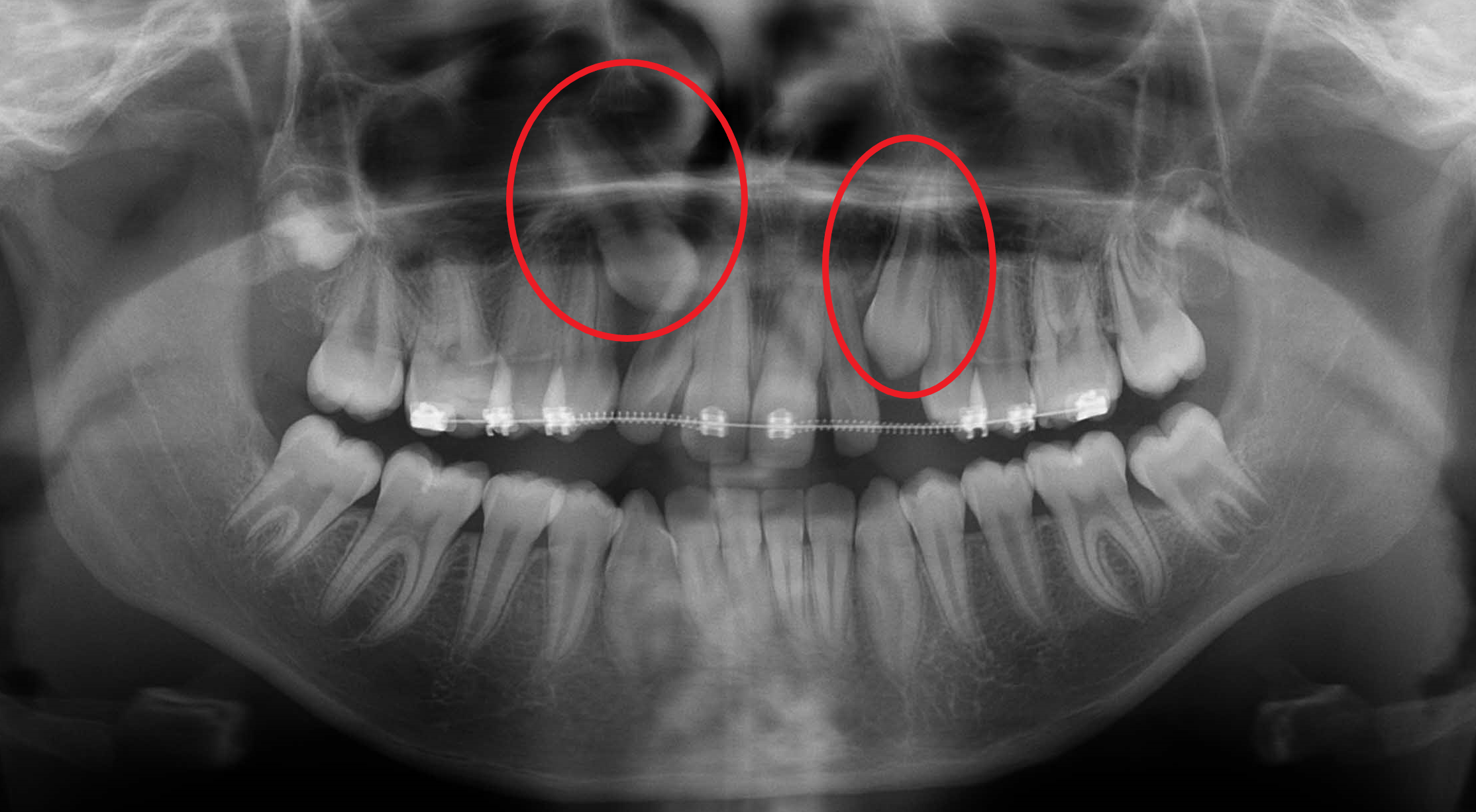
Classification of malocclusion (Angle):
The malocclusions are classified by classes, Angle, according to the ratio of the teeth of upper jaw with the lower jaw, given by the position of a molar. Class I is normal and class II and III pathological.Malocclusion Class I
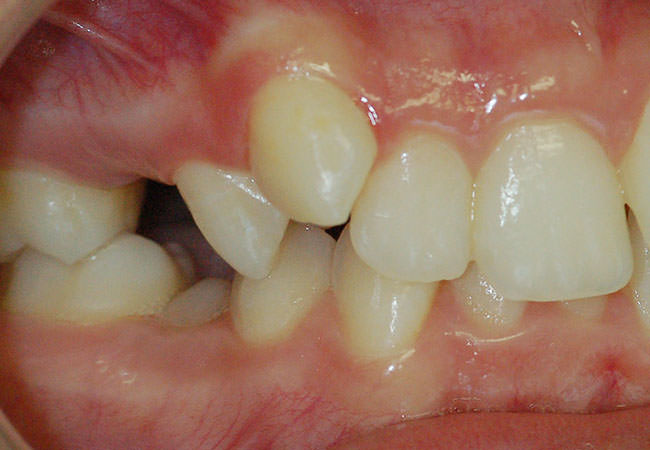
Malocclusion Class II

Malocclusion Class III
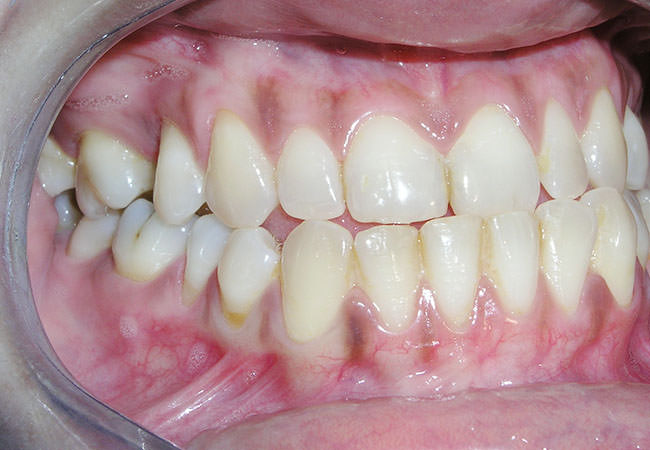
-
How Does It Work?
How does it work?
There are two types of appliances: fixed or removable and they aplly small forces on the teeth and jaws. Braces consist of bands, brackets and arch wire. The bands are placed around a tooth / teeth and serve to anchor the brackets are glued on the front of the teeth and arches of wire passing through bracketts and bind to the bands. The tightness of the wire increases the tension on the teeth causing teeth to move to their proper position and shall be adjusted monthly. The duration of treatment depends on each case is normally 2-3 years.
Maxillary expansion
Patients who suffer from cross bite can be treated using a palate expander - quadhelix. The device is placed on the back teeth of the upper jaw, pushing them out gently expanding the upper jaw until it reached the desired width.

Rapid maxillary expansion
There is another way to treat the cross bite, using a expansion device that works faster than usual. This device is placed in the back teeth of the upper jaw and expands through the middle until it reaches the perfect width.

Ortocirurgic palate disjunction
On patients older than 14 years it is not possible to expand the jaw with only these devices.
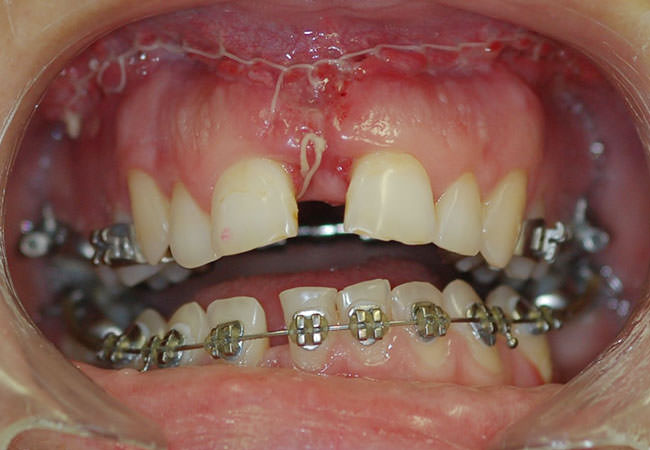
Traction of impacted teeth
The most common are the upper canines and lateral incisors. Impacted teeth, whenever possible, should be relocated and may be drawn in the dental arch. The procedure includes surgical intervention with bracket on the face of the impacted tooth and its traction for braces previously placed particular APA (armillary palatal arch).
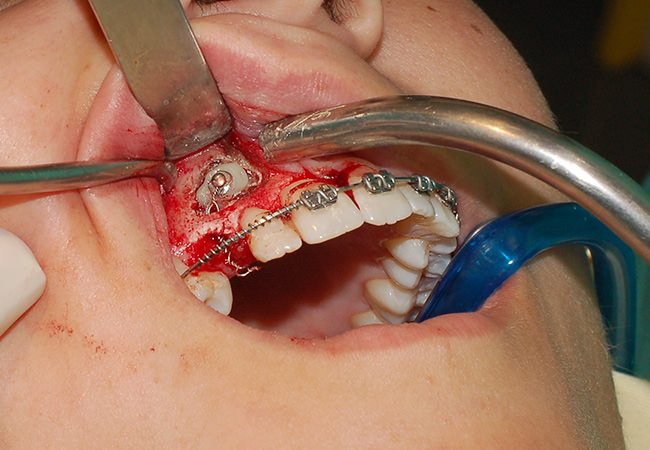
Mandibular Advancement
Class II can be treated with a Herbst appliance or similar. The device is placed in the upper and lower teeth with a slide bar to join. The device forces the lower jaw forward training the muscles for this position and stimulating the growth of the mandible.


Correction of the midline
In some cases the midline of the upper teeth do not coincide with the midline of the lower teeth. Placing a rubber band at certain points of the braces will correct this misalignment.
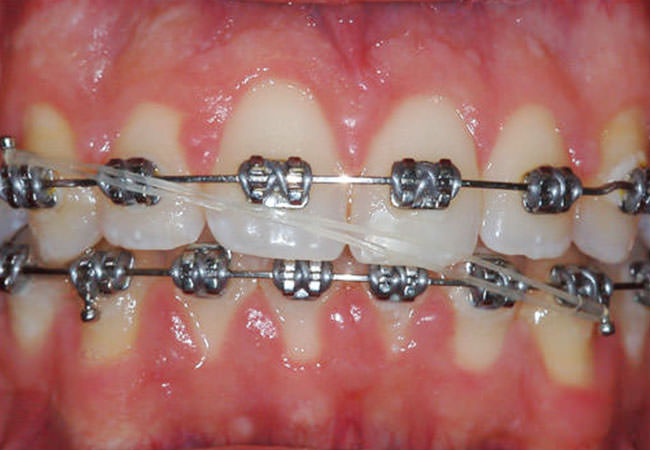
Microimplant
When theres a missing tooth, the opponent tooth can overerupt leaving no room for rehabilitation (in an implant, eg). To pull the teeth up is necessary an anchor point that is achieved with micro-implant placement.
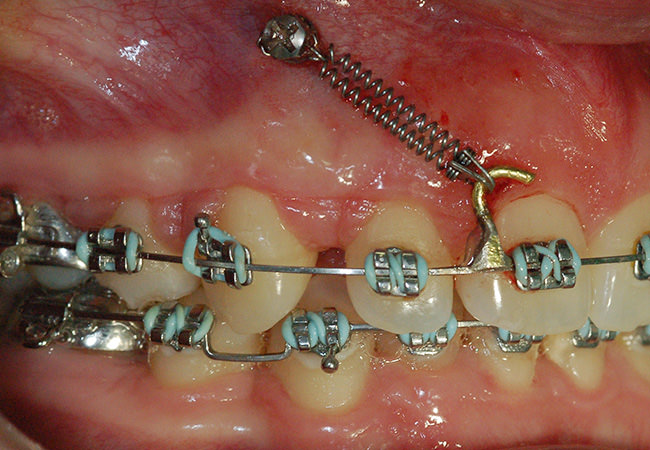
Closure of open bite
The grid of the tongue is a mechanical barrier that not only prevents the sucking of the finger, but also keeps the tongue in a more retruded position, not allowing its interposition between the incisors during swallowing and speech. With the removal of habit occurs the vertical extrusion of lower incisors and dentoalveolar closing the bite
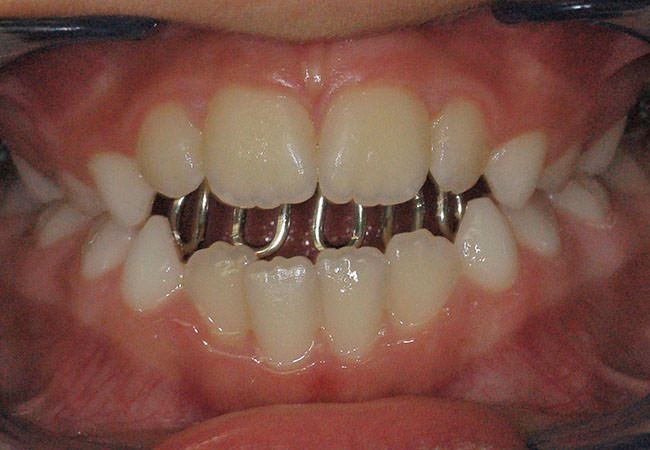
Lack of space
Sometimes in cases of mild crowding may be necessary to remove a thin layer of enamel in different teeth in order to have space for proper tooth alignment. This can be done with a drill or abrasive paper (stripping).

Opening Spaces
To restore a missing tooth when there's not enough space to place an implant (because over the time the remaining teeth moved). A fixed appliance straighten your teeth and creates space for rehabilitation after implantation.
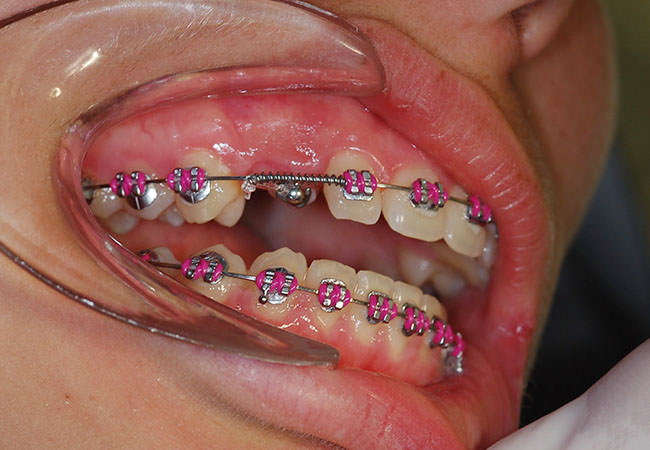
-
Maintenance
How to keep your teeth in the same position after orthodontic treatment?
When teeth are in position the fixed appliance is removed.
Acrylic Container
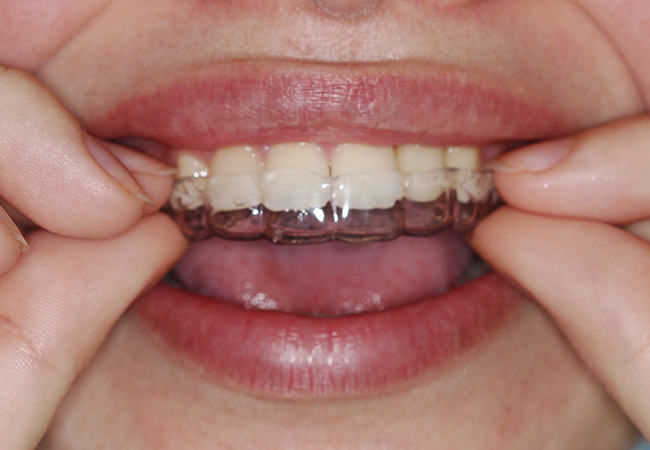
Hawley retainer
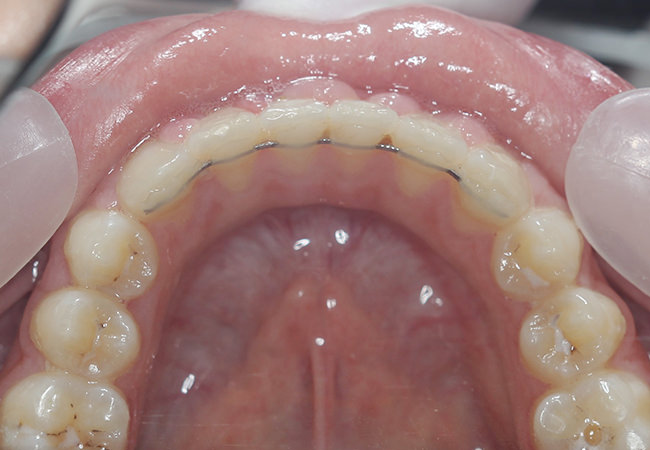
Contacts
-
Calçada de São Lourenço
N.º 3 1.º Andar D
9000-061 Funchal
Opening Hours
-
Monday – Friday
09h00 – 14h00
15h00 – 18h00
Saturdays, Sundays and Holidays
Closed
© Clínica de São Lourenço
Developed by Navega Bem Web Design


